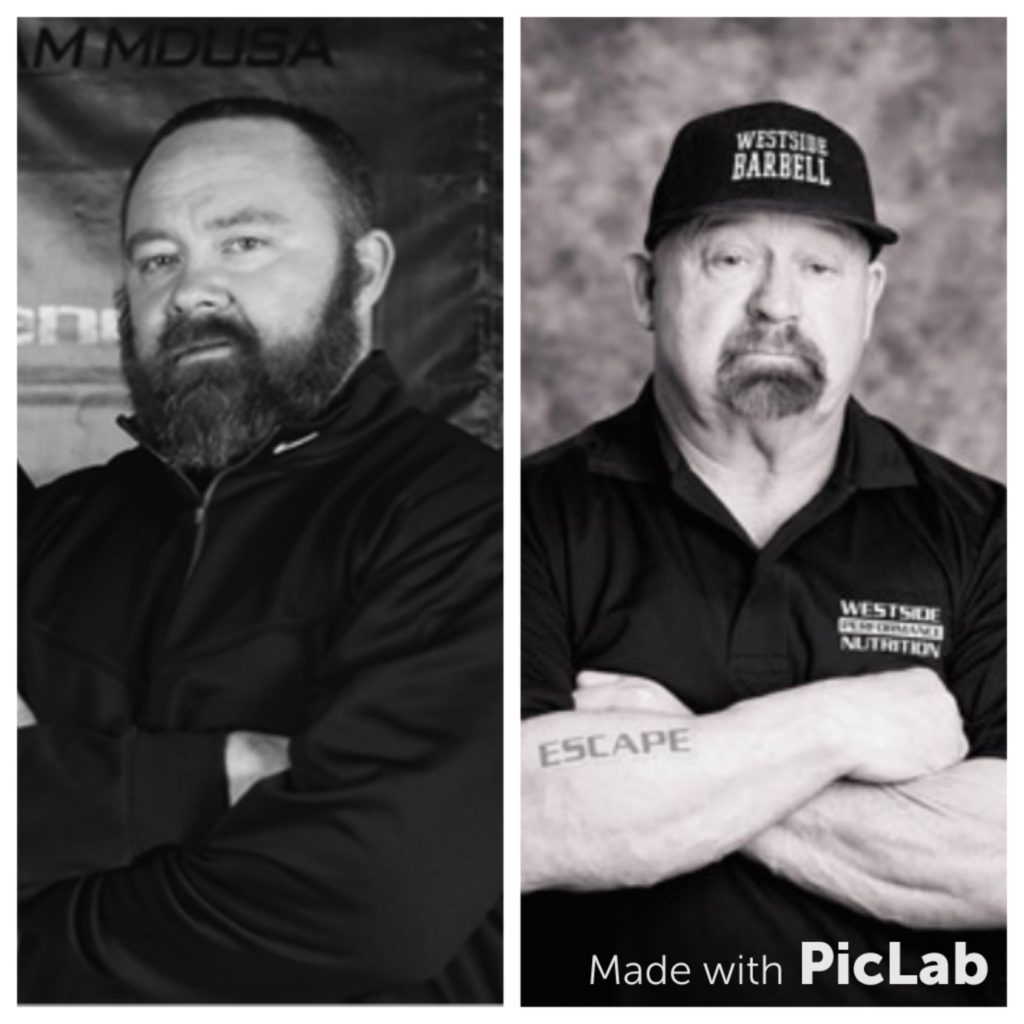Westside spends 50-80% of its volume on accessory work. Of course the accessory work is targeted and calculated. When I heard this, I was in 100% agreement. The issue is identifying those weaknesses. There are a few different ways to identify weaknesses in an athlete, so I am going to go over a few. I can definitely say that Westside Barbell has every kind of machine or apparatus that one could dream of to attack weaknesses. Here is my favorite quote from Louie Simmons that I made note of this past weekend, “People have weaknesses, problems, or issues, and I simply find solutions for them.” Call him what you want, but the man is amazing.
Here are a few ways to identify weaknesses:
1. Trial and Error- my favorite part of Westside is the conjugate method. Basically everything is changing all the time. Assistance work is rotated just like everything else. When an athlete is found to have a weakness, that weakness is targeted until it’s no longer a problem.
You could see this in all the athletes’ workouts. They would do the main lift or two of the day, and then everyone was working on the assistance work meaningful to them. Some people were working on hamstrings, some low backs, and some upper backs.
2. A good Coach- Louie was right about 99% of the time in regards to an athlete’s weakness. He could tell by looking at their musculature, and he could tell by watching them lift. It’s obvious, but most of us neglect to notice these weaknesses. Maybe we get lulled to sleep by the monotony of the day in and day out activities, but we should be aware nevertheless.
If an athlete has massive quads and miniature hamstrings, obviously that athlete needs work on the hamstrings. I remember competing in my first professional powerlifting competition. I competed against a guy from Germany with massive quads over 31 inches. I have to admit that I was intimidated. Yes he squatted an amazing amount of weight, but it was a different story on the deadlift. I was able to beat him because he didn’t address and obvious weakness.
If you see and athlete getting folded over on squats or cleans, there is a problem. The torso is obviously weak, and it is up to the coach to address that weakness. You can’t correct a weakness with better technique in a main lift. Weakness has to be addressed with exercises to strengthen that weakness.
3. Muscular Imbalance Testing- We are pumped to release our latest book “No Weaknesses” next week. It’s a 24-point test that will tell the athlete and coach exactly where the athlete is weak. The test will formulate ratios, and each test will be explained along with suggestions. I have never been more excited for a product.
[thrive_leads id=’9063′]
Louie uses his machines like the belt squat and reverse hyper as restorative machines in the recovery of the athletes. He also uses sleds and other tools to keep his athletes fresh and training hard. He takes about 30% of their training load for active recovery. The belt squat and reverse hyper both have restorative components in their very mechanism. The belt squat is great for the low back as the belt acts as traction. My friend Jason Coker told me that he hasn’t had any back issues, since moving to Westside. He totally credits the belt squat. Did I mention that he has broken his back multiple times, and he squats 1,000lb weighing 220lb?

The reverse hyper is great for strengthening the back, decreasing compression on the spine, and releasing synovial fluid keeping the spine lubricated. The hardest workout ever on the reverse hyper will leave you filling great the next day. I can definitely say that my athletes struggled on this peace of equipment the most indication weak lower backs.
The use of sleds is also great for recovery because there is no eccentric contraction of the muscles. The eccentric contraction is where the damage is done. When the exercise is mainly concentric in nature, the exercise becomes restorative in nature. Blood is pumped to the muscles being worked causing healing and restoration.
We take recovery very seriously at the Mash compound. On any given day you will see athletes performing recovery work based on their own needs. Our Team PT John Davidson prescribes most of it, I prescribe some of it, and the athletes use their instincts to choose the rest. We have a turf area outside that most use to mobilize, perform carries, and other restorative exercises.
[thrive_leads id=’9063′]
I recommend that athletes train hard and recover harder. If my athletes can train longer and harder than your athletes, then we win especially without getting any major injuries. This whole thing is a marathon. If you are trying to sprint, one of my athletes will eventually come jogging right by you.

Hello Coach Travis ; I loved this article ! O.Lifting like all sports …the anatomical chart concept and a holistic approach is the only way to keep athletes at a top level performance …Hypers / reverse hypers / sled work / hill sprints…forward and backward